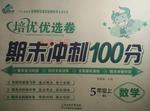题目内容
If eighteen-year-old Karki doesn't turn out to be the next Edison, I'll chop off my locks This kid invented a solar pane (嵌板) which uses human hair as a conductor and could provide the world with cheap, green electricity, solving the energy crisis.
Karki, a Nepal teenager, who lives in a village in Rural Nepal, used human hair to replace silicon, which is a common but expensive component of solar panels.
By using hair as a replacement, Karki says solar panels can be produced for around 23 pounds. But if they were mass-produced, Karki says they could be sold for less than half that price, which could make them a quarter of the price of those already on the market.
The solar panel works because melanin, the substance giving hair its color, is light sensitive and can act as an electrical conductor. Karki was inspired to follow this route by a Stephen Hawking book, which explained how to create energy from hair.
The device (设备) Karki has shown is able to produce 9V or 18W of energy -- plenty to charge a mobile phone. Half a kilo of hair can be bought for only 16p in Nepal and lasts a few months, where as a pack of batteries would cost 50p and last a few nights," according to Karki.
Karki has now sent out several devices to other districts near his village for testing. "First I wanted to provide electricity for my home, then my village. Now I am thinking for the world," he said.
Karki says the idea is more important than ever because of the urgent need for renewable energies in the face of limited power sources and global warming. Slowly, natural resources are decreasing. One day we will be in a great crisis. This is an easy solution for the crisis we are having today.
64. What is the best title of the passage?
A. Introduction of Solar Panels B. Functions of a New Solar Panel
C. Special Solar panel Materials D. Karki Invented a New Solar Panel
65. Why did Karki want to invent a solar panel with hair?
A. Because hair is not very expensive.
B. Because silicon is hard to find.
C. Because he wanted to provide electricity for his home.
D. Because the energy crisis is very serious in his home town.
66. From the last paragraph we can know ________.
A, Karki s invention is of great importance
B. Karki can predict what will happen in the future
C. the energy crisis will disappear in the future
D. Karki's invention will make him wealthy
67. The purpose of this passage is to ________.
A. Karki for his great invention B. introduce a new solar panel
C. promote the sales of solar panels D. warn people of the energy crisis
64---67 DCAB

 通城学典默写能手系列答案
通城学典默写能手系列答案 金牌教辅培优优选卷期末冲刺100分系列答案
金牌教辅培优优选卷期末冲刺100分系列答案The Jungle Book
Lost in the jungles of India as a child and adopted into a family of wolves, Mowgli is brought up on a diet of Jungle Law, loyalty, and fresh meat from the kill. Regular adventures with his friends and enemies in the jungles improve this child’s strength and cleverness and stir every reader’s imagination.
Price: $ 7.79
ISBN-13: 978-1613820742
Average Customer Review: ★★★★☆
A Stolen Life
The first work of its kind—Jaycee Dugard’s personal life story, her own story of being kidnapped (绑架) in 1991. When Jaycee was eleven years old, she was kidnapped from a school bus stop. She was missing for more than eighteen years, and gave birth to two daughters during her imprisonment (监禁).
Price: $ 19.79
ISBN-13: 978-1442344983
Average Customer Review:★★★★★
While We’re Far Apart
Five-time Christy Award winner Lynn Austin is called as “one of the style’s best historical fiction novelists”. Set in Brooklyn, New York, during World War Ⅰ,while a motherless girl longs for her daddy and a young lady hopes for a second chance at love, this tale explores the uncertainty that stays in people.
Price:$ 6.00
ISBN-10: 0764204971
Average Customer Review:★★★★☆
The Fashion Police
The Fashion Police was in the second place in the Chapter One Promotions Novel Competition 2010 and nominated (提名) Best Novel with Romantic Elements 2010 by The Romance Reviews. It is a strange comedy-mystery, combining murder and with romance.
Price: $ 12.73
ISBN-13: 978-1451555653
Average Customer Review: ★★★☆☆
【小题1】If you are interested in personal life stories, then you can choose the book _________.
| A.A Stolen Life | B.The Jungle Book |
| C.The Fashion Police | D.While We’re Far Apart |
| A.ISBN-13: 978-1613820742 | B.ISBN-13: 978-1442344983 |
| C.ISBN-10: 0764204971 | D.ISBN-13: 978-1451555653 |
| A.It wins the award Christy Award five times. |
| B.It is a great book on violence and family education. |
| C.It is nominated Best Novel with Romantic Elements 2010. |
| D.It has many elements borrowed from stories of true policemen. |